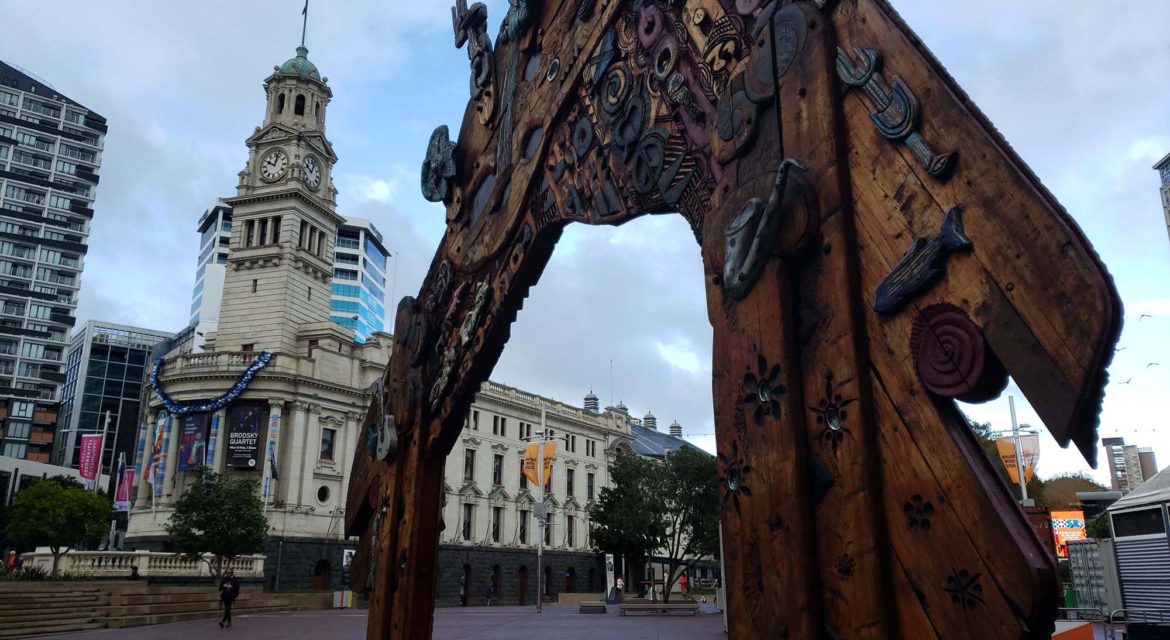 Aotea Square is a civic square in the heart of Auckland’s central business district in New Zealand. Framed by key civic and cultural facilities such and the Town Hall and Aotea Centre, Aotea Square has become an essential economic and cultural hub of Auckland which has helped drive residents and visitors to the area.
Aotea Square is a civic square in the heart of Auckland’s central business district in New Zealand. Framed by key civic and cultural facilities such and the Town Hall and Aotea Centre, Aotea Square has become an essential economic and cultural hub of Auckland which has helped drive residents and visitors to the area.

From 1979 to 2010 and Beyond
While Auckland Town Hall opened in 1911, Sir Dove-Myer Robinson officially opened Aotea Square 1979. Located at the intersection of Grey’s Ave and Queen Street, Aotea Square has been used for a variety of purposes over the decades. It takes its name from the Māori name for the Great Barrier Island, Motu Aotea.
 In 2000, a competition for a redesign was held for the space that started in November 2008 and ran to late 2010. Changes included stronger connections with the street network and surrounding facilities, more green space and trees, greater amenity and expression of arts, and a stronger identity for the space.
In 2000, a competition for a redesign was held for the space that started in November 2008 and ran to late 2010. Changes included stronger connections with the street network and surrounding facilities, more green space and trees, greater amenity and expression of arts, and a stronger identity for the space.
Aotea Square is often utilized for public events, including fairs, protest rallies, music festivals and rock concerts. This is just a hint of the cultural and economic power it has opened up for Auckland though.

A Cultural and Economic Gateway
Events that range from the Auckland Writers Festival to the Auckland Arts Festival to a Korean Food Tour take place at Aotea Square throughout the year, providing residents and visitors a place to congregate and engage with one another. These events have the potential to draw hundreds or thousands of people to them, with plenty of space to accommodate crowds of various sizes.
 That space includes a huge lawn with a large display monitor, where people can either relax on the grass or view what’s being displayed on the screen. Additionally, numerous shops and stores surround and are contained within the Square, providing visitors with a multitude of food and entertainment choices.
That space includes a huge lawn with a large display monitor, where people can either relax on the grass or view what’s being displayed on the screen. Additionally, numerous shops and stores surround and are contained within the Square, providing visitors with a multitude of food and entertainment choices.
As an additional means of revenue for Aotea Square, the space can be booked for a variety of events or concerts. Booking information is readily available, and the team also welcomes any programming ideas that can help draw interest and activity to the space.
The culture of the area is also on display in Aotea Square in the numerous pieces of art that it contains. At the Queen Street section of the Square is an arch called ‘Waharoa’ which means Gateway in Māori. In front of the Town Hall is a bronze statue of Sir Dove-Myer Robinson, a former mayor of Auckland who opened the Square in 1979. It has also been home to temporary pieces like Dragonhead, by Japanese artist Ujino.
All of these elements and opportunities have created a legacy for the city that continues to influence the activities taking place in Aotea Square.

A Sense of Place
 Much like other Squares across the world that serve as a hub for the entire city or juxtapose various ideals and eras, Aotea Square has been able to create a sense of place in the extremely busy central business district of Auckland. In doing so, it has showcased what it means to transform what would otherwise just be a small park or open area into something monumentous.
Much like other Squares across the world that serve as a hub for the entire city or juxtapose various ideals and eras, Aotea Square has been able to create a sense of place in the extremely busy central business district of Auckland. In doing so, it has showcased what it means to transform what would otherwise just be a small park or open area into something monumentous.

